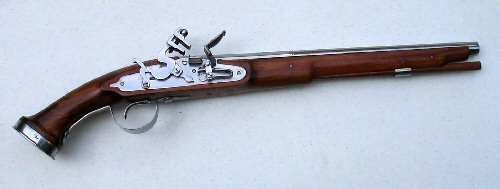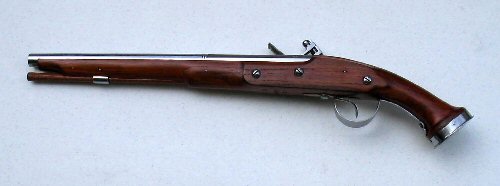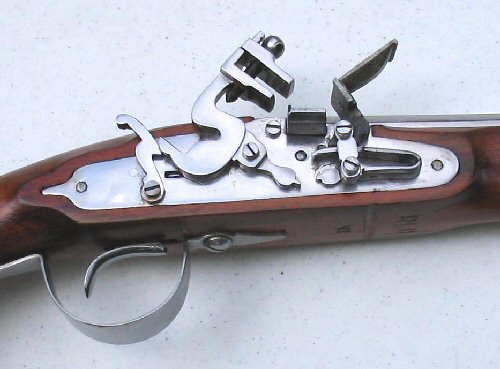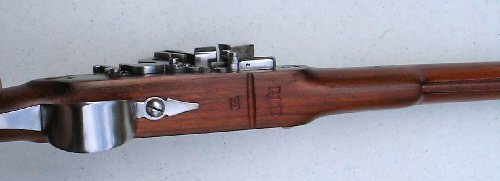



|

|

|
|
|               |
The lock is an "English lock" as opposed to a French lock, which is what we call a true flintlock today. |
In the English lock, the pan cover and steel are incorporated into one part known in the period as the "battery" (we call it a frizzen today). As small a thing as this may seem, it is a major step in the evolution of the flintlock. |
This is a formidable piece, with a 16" long barrel in the .62 cal range. These would have been carried in pistol buckets with the butts facing forward (away from the rider) so you would have the room to draw them. |
The squared gunflint as we know it today was not yet in vogue when these were developed. Instead, they were built with a "gunspall" in mind, which was basically a chunk of flint. The reccomended flint size will be marked on the cover of your owner's manual. |
| Here is a right hand view of the English Lock pistol. It is as big as it looks. |

|
| In the left hand view, you can see that there is no sideplate, typical of 17th century "work" guns. Instead there are three panhead screws to secure the lock. |

|
| Here is a close up of the lock. If you look close, you can see how these are the next step in evolution from the snaphaunce. It retains the horizontal sear and external buffer. |

|
| The 16" barrel is two staged and has 17th century markings. |

|
| Here's a view of the bottom, where you can see the early style triggerguard and 17th century rack markings. |

|